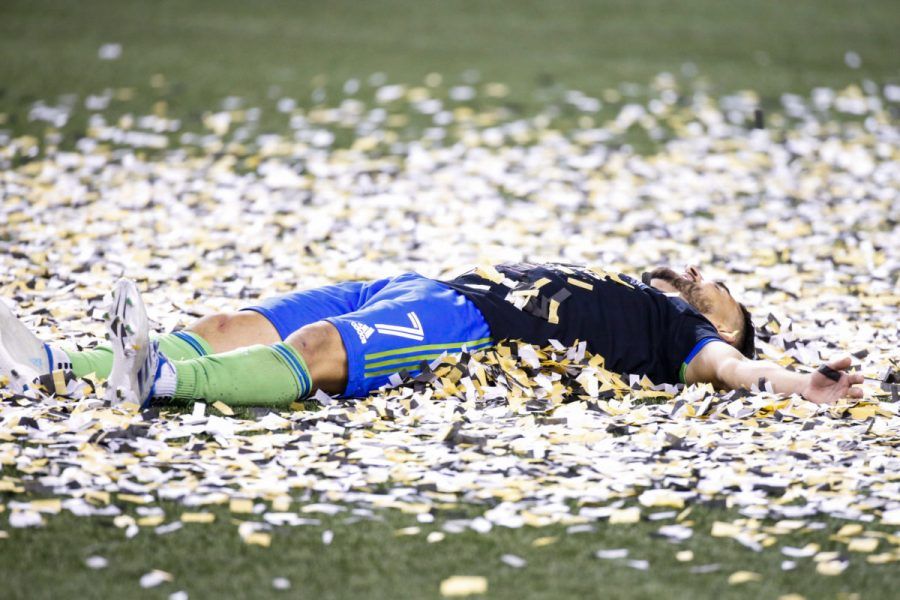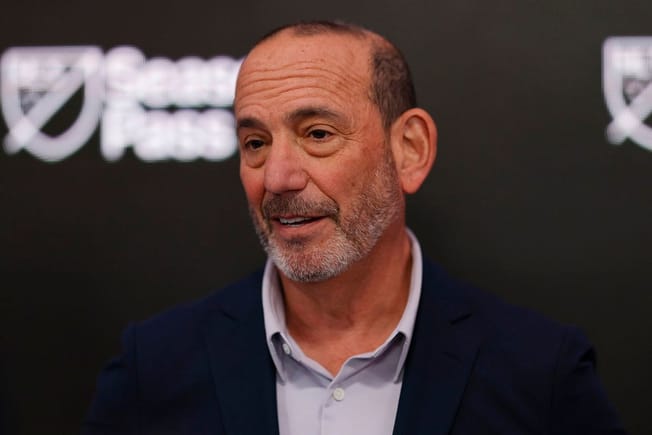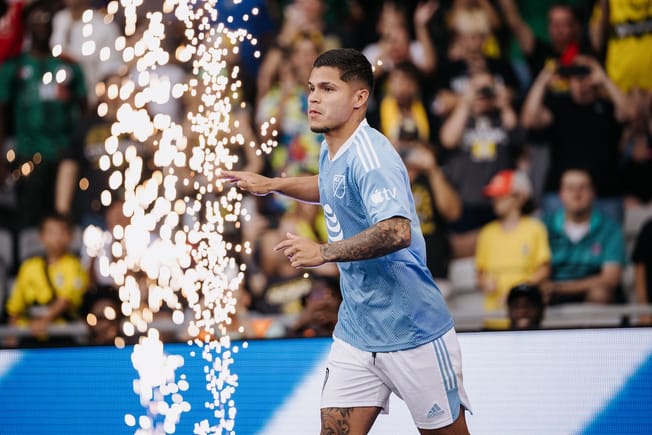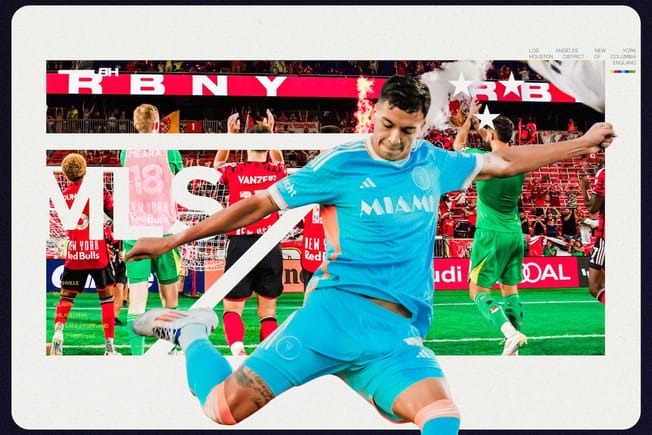The crowd at Lumen Field on Wednesday night wouldn’t let up.
They cheered relentlessly for over a minute while three of the Seattle Sounders’ stalwarts, Nico Lodeiro, Raul Ruidiaz, and Jordan Morris, left the field and swapped places with their substitutes. Up by multiple goals in the second leg of the Concacaf Champions League Final, the game was over. Those three players – along with the rest of their teammates, the coaching staff, and other members of the club – certainly earned that ovation.
For the first time in the tournament’s modern era, a Major League Soccer team had officially won the CCL.
The Seattle Sounders beat Pumas UNAM 3-0 on Wednesday night in the second leg of the final, giving them a 5-2 aggregate win over their opponents from Liga MX. MLS teams have played in the final before, but none of them could clear the last hurdle. Real Salt Lake fell to Monterrey in 2011, the Montreal Impact (RIP) lost to Club América in 2015, Toronto couldn’t get past Chivas in 2018, and LAFC dropped out against Tigres in 2020.
Becoming the first MLS team to win this region’s Champions League is a historic achievement. With that in mind, it’s difficult to think of a team that deserves it more than the Seattle Sounders. Since joining MLS in 2009, the Sounders have qualified for the playoffs every single year. They’ve also won the Supporters’ Shield and lifted two MLS Cups since 2014. With on-field consistency and impressive roster builds, they have become the model MLS franchise.
Still, plenty of impressive MLS teams have tried and failed to add the CCL trophy to their cases in the past. So how did Seattle do it? How did they take down Pumas on Wednesday? Well, they did it the Sounders way.
Let’s dive into some of the key pieces of that second leg.
LODEIRO’S OFF-BALL MOVEMENT
Against Pumas, Brian Schmetzer set up his Sounders team in the same formation that he’s used for so much of his MLS coaching career. He used a 4-2-3-1, complete with a double pivot behind Nico Lodeiro, who played as a No. 10. Pumas, on the other hand, started the game in a 4-3-3 shape with a lone No. 6 behind two No. 8s. On paper, those two midfield shapes cancel each other out. One team’s defensive midfielder overlaps with the other’s attacking midfielder and the double pivot in the 4-2-3-1 overlaps with the eights in the 4-3-3.
For stretches of Wednesday night’s game, those two midfield shapes really did cancel each other out. In particular Higor Meritao, Pumas’ defensive midfielder, carefully monitored Lodeiro and denied him any real breathing room between the lines.
What do you do when you can’t find space in one part of the field? Wait, actually, let me rephrase that. What does a No. 10 do when they can’t find space in one part of the field? They move. And then they move some more. That’s exactly what Lodeiro did to free himself from Meritao.
In one moment, Lodeiro would drop deep and to one side to ditch Pumas’ midfield.

In the next moment, he would drop deep and to the other side, far enough away from Meritao that the Brazilian didn’t dare follow him.

And in yet another moment, Lodeiro would move into one of the halfspaces as part of a midfield-wide shift for Seattle. That’s exactly what happened in the buildup to the Sounders’ first goal. Lodeiro relocated to the left halfspace while Obed Vargas pulled Meritao forward. With Meritao out of the picture, Lodeiro received the ball and went on to earn the free kick that led to Ruidiaz’s goal in the 45th minute.
Nico Lodeiro (and his midfield teammates) move so well in the buildup to Seattle's first goal. Lodeiro, Rusnak, and Vargas all shift to the left side to overload Meritao.
— Joseph Lowery (@joeclowery) May 5, 2022
Lodeiro gets free and 10 seconds later, the Sounders have the free kick that leads to Ruidiaz's first goal. pic.twitter.com/9rooJfWsu3
As that clip shows, Lodeiro was just one part of Seattle’s midfield machine. Albert Rusnak provided a calming touch and had the MLS assist for the first goal. Vargas wasn’t as comfortable, but the 16-year-old subbed on for an injured Joao Paulo in the first half and ate up some valuable minutes. Vargas wasn’t the only substitute to come on for an injured starter early in the game, either: Kelyn Rowe stepped in for Nouhou, who left the field with a right quad injury in the 11th minute.
Seattle didn’t create many obvious chances until later in the game, but their midfield and their depth certainly gave them an edge.
KEEPING JUAN DINENNO AT BAY
Juan Dinenno, Pumas’ striker and the Concacaf Champions League’s leading scorer, is a dangerous man. He scored twice against the Sounders in the first leg of the final, even while dealing with an injury, and was looking to do more damage on Wednesday.
When in possession, Pumas had one primary directive: find Dinenno via direct forward passes into the channels and via crosses into the box. After targeting him multiple times in the first five minutes, it was clear that the Argentine striker was the key piece in their attack.
Seattle, to their credit, didn’t let Dinenno have anywhere near as much influence on this game as they did in the away leg. Center backs Yeimar Gomez Andrade and Xavier Arreaga generally did a good job of staying with Dinenno. The Sounders’ center backs weren’t perfect – Yeimar failed to clear a cross that resulted in Dinenno’s first and best look of the game and Arreaga put in a needless challenge on Dinenno in the 60th minute that gave the forward a free kick in Zone 14 – but they did enough.
With effective defending in their own third and some strong counter pressing higher up the field, the Sounders kept Pumas at bay for the vast majority of the game. Down 1-0 with roughly 10 minutes remaining, Pumas started to throw numbers forward in hopes that providing their No. 9 with a little extra help would change things.
It did. Just not for Pumas.
IT’S IN SEATTLE’S DNA
One of the things that makes the Seattle Sounders a consistent threat to win trophies in MLS (and now in regional competitions, too) is that they’re built to blitz you as soon as you take one too many risks in possession. With players who thrive in attacking transition like Morris and the Roldan brothers, the Sounders love to run.
There were plenty of moments on Wednesday night for the Sounders to run, but the best ones came as a direct result of Pumas’ desperation. They needed to score and were willing to push plenty of players forward to do so. Putting a group of four or five guys in the box and another group in the final third became the new normal for Pumas towards the end of the match.
If that was Pumas’ new normal, Seattle’s was breaking the game wide open in the space left behind by their opponent’s aggressive, disorganized positioning. The Sounders’ second and third goals didn’t come from any sort of crazy tactical innovation. No, they simply came from classic Seattle transition attacks.
Here’s a look at the second goal, where Jordan Morris moved behind Pumas’ backline.
RAÚL RUIDÍAZ SENDS LUMEN FIELD INTO A FRENZY pic.twitter.com/yhYRePpbNc
— Seattle Sounders FC (@SoundersFC) May 5, 2022
And here’s a screenshot of Pumas’ scattered defensive shape less than 15 seconds before Seattle’s third and final goal.

With dangerous transition attacks, a strong defensive performance, quality midfield play, and their depth on full display, the Seattle Sounders lifted the CCL trophy in the most Seattle Sounders way possible. It just felt right.
They’re MLS’s first CCL winner – and that feels pretty right, too.







Comments